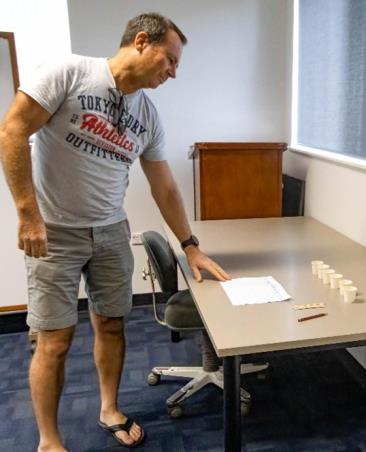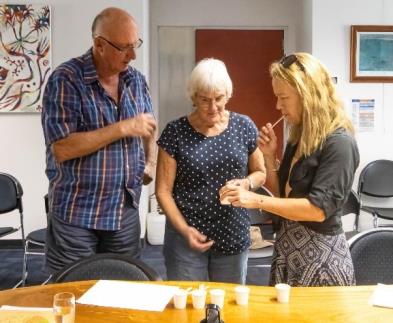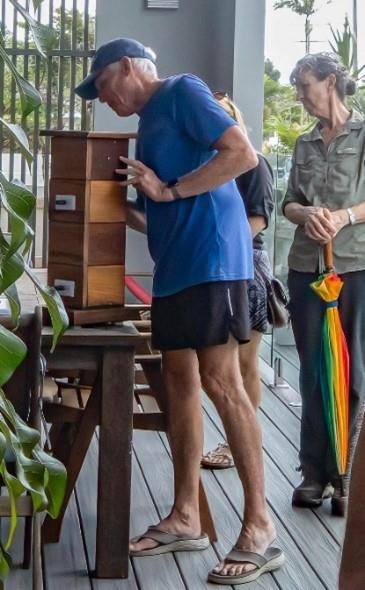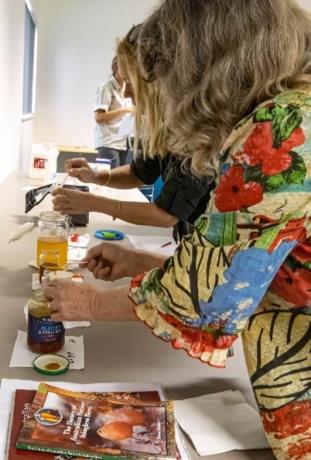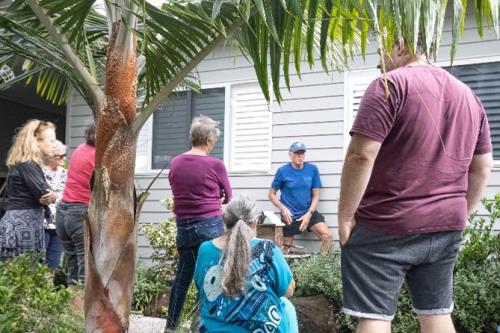The Cassowary Coast branch met on Sunday 26th February for our first gathering of the year which was a 2-stage meeting starting at Mission Beach State School and finishing at Roger’s house.
After running through our general business, we got stuck into a honey tasting and began with a discussion about the composition and properties of native bee honey, focusing on: types of sugars, high water content, density, pH, colour, aroma and taste. We also looked at how European bee honey is taste tested and decided which testing categories we could apply to our testing of native bee honey. Attendees provided 6 samples of honey for the taste test that came from clypearis, sapiens, carbonaria and australis hives. The group divided into tasting teams with a marking check list and began observing each honey and rating it on colour, clarity, aroma, texture, acidity and most importantly flavour and after-taste. Points were given and tallied with the group favourite being the australis honey, which was a Townsville honey provided by Nick Smith, who drove up to join us for the meeting. The honey tasting was completed with much rigorous discussion and debate over each honey’s attributes and pitfalls.
After the honey tasting, the group moved onto Roger’s house where we heard and saw the story of Roger’s bee-keeping journey, which began in Cooktown with a res-cued log hive of sapiens. He also successfully educted a clypearis hive from a window frame. Both hives were brought to Mission Beach when Roger and his wife relocated. Roger has been trying to educt from the log hive for a few years, without much success adding weight to the idea that sapiens are reluctant to move into eduction boxes. However, they seem to readily create daughter hives as they have taken up residence in several vacant cavities around the yard, with the most interesting re-cent one being an upturned terracotta pot with a plastic elbow entrance glued over the drainage hole.
Roger has also expanded the number of clypearis hives through splits, rescues and eductions. The clypearis are in hardwood boxes that Roger has skilfully and thoughtfully crafted, taking into account the volume required by the bees and their requirements according to their hive structures. His boxes are set up for viewing as he enjoys being able to see what the bees are up to in their hives and being able to show and share the inner workings of a hive with other people.
Our meeting concluded at Roger’s house. Thank you to everyone for coming along and thanks to those who contributed honey samples.
